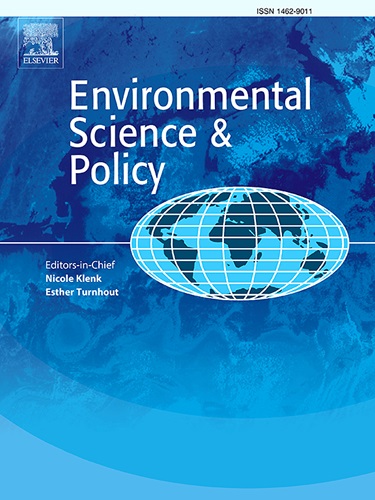Exploring the use of adaptation tipping points: A systematic review of definitions, characteristics and applications
IF 5.2
2区 环境科学与生态学
Q1 ENVIRONMENTAL SCIENCES
引用次数: 0
Abstract
Adaptation Tipping Points (ATPs) are critical in adaptation pathway planning, marking thresholds where existing strategies fail, and requiring new approaches. Despite their importance, ATPs lack consistent definitions, leading to conceptual fragmentation. Following the lack of a systematic approach, existing research provides limited insights into how ATPs align with broader development trajectories, making their integration into adaptation strategies challenging. Addressing this gap requires a comprehensive characterization that clarifies how ATPs have been applied in scientific literature, ensuring consistency while allowing for context-specific adaptations. To this end, we systematically analyse and consolidate existing research on ATP definitions, methods, and outputs, laying the groundwork for a standardized approach to ATPs in climate change adaptation planning. We identify four primary ATP categories (policy-based, acceptance-based, transition-based, and opportunity-based), each representing distinct thresholds shaped by governance, societal acceptance, systemic transitions, and strategic opportunities. These categories are characterized by differences in system dynamics, triggering events, consequences, adaptation drivers, and goals, defining distinct trajectories and objectives for each category in adaptation pathway planning. Furthermore, we show that the application of different ATP categories is independent of specific contexts, methods or outcomes, highlighting the flexibility of different categories across climate change adaptation planning processes. This study underscores the potential of ATPs to enhance cross-sectoral integration and facilitate the development of adaptation pathways. Ultimately, a more coherent application of ATPs can strengthen adaptation pathway planning by enabling timely interventions, accounting for systemic interdependencies, and aligning adaptation measures with broader sustainability goals in an integrated, system-wide framework.
探索适应临界点的使用:对定义、特征和应用的系统回顾
适应临界点(atp)在适应路径规划中至关重要,它标志着现有策略失败的阈值,需要新的方法。尽管它们很重要,但atp缺乏一致的定义,导致概念碎片化。由于缺乏系统的方法,现有的研究对atp如何与更广泛的发展轨迹保持一致提供了有限的见解,使其融入适应战略具有挑战性。解决这一差距需要一个全面的表征,澄清atp是如何在科学文献中应用的,确保一致性,同时允许根据具体情况进行适应。为此,我们系统地分析和整合了ATP的定义、方法和产出的现有研究,为气候变化适应规划中ATP的标准化方法奠定了基础。我们确定了四个主要的ATP类别(基于政策、基于接受、基于转型和基于机会),每个类别都代表了由治理、社会接受、系统转型和战略机会形成的不同阈值。这些类别的特点是系统动力学、触发事件、后果、适应驱动因素和目标的差异,在适应路径规划中为每个类别定义了不同的轨迹和目标。此外,我们表明,不同ATP类别的应用与特定的环境、方法或结果无关,突出了不同类别在气候变化适应规划过程中的灵活性。这项研究强调了atp在促进跨部门整合和促进适应途径发展方面的潜力。最终,更连贯地应用atp可以加强适应途径规划,实现及时干预,考虑系统的相互依赖性,并在一个综合的全系统框架内使适应措施与更广泛的可持续性目标保持一致。
本文章由计算机程序翻译,如有差异,请以英文原文为准。
求助全文
约1分钟内获得全文
求助全文
来源期刊

Environmental Science & Policy
环境科学-环境科学
CiteScore
10.90
自引率
8.30%
发文量
332
审稿时长
68 days
期刊介绍:
Environmental Science & Policy promotes communication among government, business and industry, academia, and non-governmental organisations who are instrumental in the solution of environmental problems. It also seeks to advance interdisciplinary research of policy relevance on environmental issues such as climate change, biodiversity, environmental pollution and wastes, renewable and non-renewable natural resources, sustainability, and the interactions among these issues. The journal emphasises the linkages between these environmental issues and social and economic issues such as production, transport, consumption, growth, demographic changes, well-being, and health. However, the subject coverage will not be restricted to these issues and the introduction of new dimensions will be encouraged.
 求助内容:
求助内容: 应助结果提醒方式:
应助结果提醒方式:


